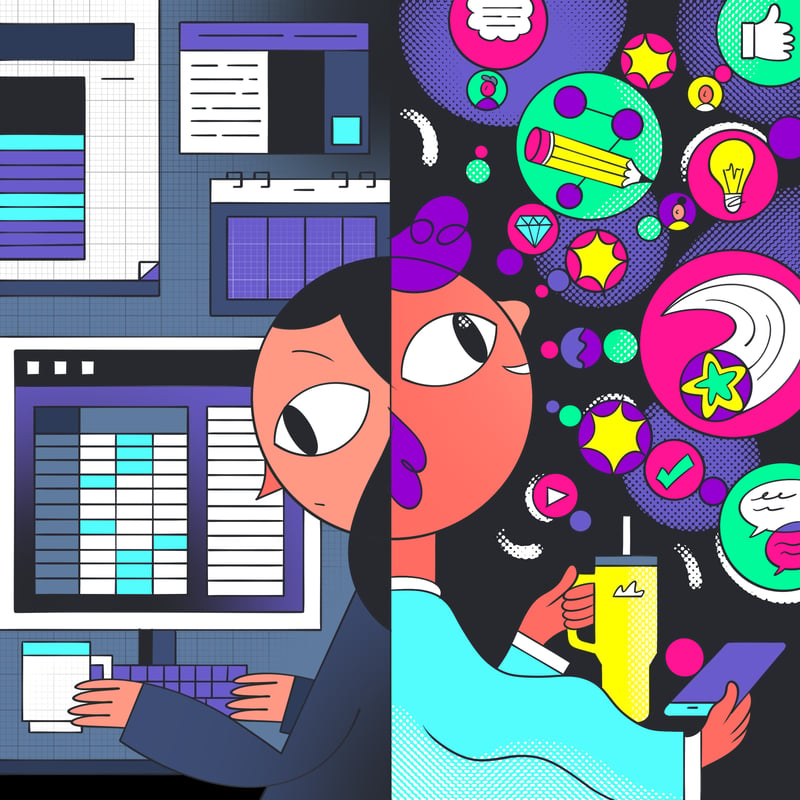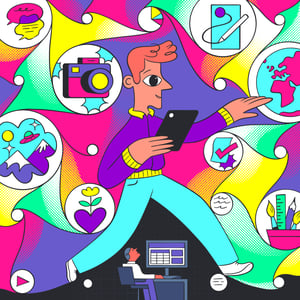Seeing Eye to Eye: How Visuals Bridge the Generation Gap at Work
As Gen Z enters the workforce, they’re reshaping how we share ideas, solve problems and connect. Here’s why embracing visual communication isn’t just about keeping up with this generation - it’s about building clearer, more connected teams for the future.
Gen Z - that’s those born from 2000 onwards - is the largest generation in human history. Over the next decade, 1.3 billion of them will enter the global workforce. That’s a tidal wave of new talent, new perspectives and new ways of working.
Yet there’s a growing gap between how this generation works best and how most organisations still communicate. According to Canva’s recent State of Visual Communication Report (with Harris Poll and Neuro-Insight), 90% of Gen Z professionals say they do their best work visually. No surprise there - as digital natives, they’re fluent in visual storytelling. Raised on screens, visuals are simply how they think, learn and connect.

And still, most organisations are still running on traditional, text-heavy systems - reports, spreadsheets and decks that leave little room for creativity or connection.
“We’re seeing a clear mismatch between how the human brain is wired to absorb information and how most workplaces still communicate.”
Emma Robinson, Customer Marketing Lead, Canva
As Emma Robinson of Canva puts it: “We’re seeing a clear mismatch between how the human brain is wired to absorb information and how most workplaces still communicate.”
She adds, “The most effective companies don’t just build their brands visually - they operate visually.” They understand that visual communication is no longer optional, it’s essential.
It’s what connects teams across borders and generations. It’s what fuels collaboration and innovation. Or, as the report puts it, “Visual communication is the new connective tissue of high-performing, forward-thinking teams, bridging geographic and generational gaps so people can work with clarity and intention.”
“Seeing a generation of workers who’ve grown up in a naturally visual world fully embrace this approach feels like a long-overdue alignment between how people think and how work actually gets done.”
At Scriberia, this makes perfect sense. We’ve been championing visual storytelling in organisations for years - helping teams map out ideas, spark collaboration and communicate with clarity. So seeing a generation of workers who’ve grown up in a naturally visual world fully embrace this approach feels like a long-overdue alignment between how people think and how work actually gets done. 
This isn’t just a matter of preference; it’s how the human brain works. Research from the report shows that creative, visual content is remembered 74% faster, sparks 26% stronger emotional responses and creates over 20% more emotional impact than dull, text-heavy communication.
In other words: the more visual your message, the faster and more deeply it lands.
So, what does that mean for organisations who want to get the best out of the biggest, most visual generation in history?
1. Meet them where they are
Long reports and endless slide decks won’t cut it. Use visuals to strip away the noise and put the focus where it belongs - on clarity, collaboration and understanding.2. Make it tangible
Complex strategies and big-picture visions often feel abstract. Visual tools, whether vision maps, infographics and illustrations - give everyone a clear view of the landscape, making it easier to align and act.
3. Speak a common language
Visuals aren’t just for Gen Z. Older generations may not have grown up digital-first, but they know clarity when they see it. Shared pictures create shared understanding - and that builds bridges across generations, disciplines and hierarchies.
As the report itself concludes: “Even as technology and AI evolve in ways we’re only beginning to grasp, one truth holds: Creativity is the ultimate business advantage. And the teams who can shape emotion, memory, and meaning - visually and at scale- will lead the next era of work.”
Ready to transform how your organisation collaborates and communicates? Contact us today!
